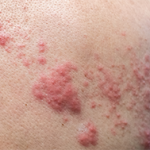An increased risk of infection is to be expected, … because of the mechanism of action of JAK inhibitors. They are known to down-regulate interferon-gamma & diminish cell-mediated immunity & innate immune function.
The effect on vascular health is “an area of active investigation where there are some potential signals suggesting there are differences there, and maybe with Jakinibs the risk is elevated. But it’s not clear,” Dr. Winthrop said.
In a 2018 FDA submission from Eli Lilly, an elevated risk of venous thromboembolism (VTE) was reported for patients taking baricitinib.5 In conclusion, the submission indicated that VTE is an “important potential risk,” although investigations are ongoing to further clarify any correlation.
Similarly, the FDA issued a warning about an increased risk of pulmonary embolism (PE) in RA patients taking 10 mg of tofacitinib twice daily.6 This warning came as a result of a post-market safety trial required as a condition of drug approval.
Overall, the research shows Jakinibs are “very efficacious and fairly safe,” Dr. Winthrop said. “They have safety concerns for the most part similar to other DMARDs, and in some cases [these risks are] somewhat specific or different [from] other drugs being used. It’s an interesting place to be to understand those differences and create ways to prevent problems and mitigate safety concerns.”
Key Considerations
Because of the increased risk of herpes zoster infection with Jakinibs, it’s important that patients receive the shingles vaccine before starting treatment, Dr. Winthrop said. “Figuring out how best to prevent zoster is a huge goal,” he noted, adding that new studies are planned to help establish best practices.
Rheumatologists can encourage their patients to get involved in such studies to help answer pressing questions about Jakinibs and, ultimately, improve treatment options and success for all patients.
Another risk factor for infections is prednisone therapy. Added to Jakinibs, prednisone leads to a “marked increase in risk,” said Dr. Winthrop. Thus, minimizing or eliminating prednisone therapy in patients who are going to start Jakinibs is very important.
Although certain precautions should be taken and new research will elucidate more about this class of drugs as time goes on, Jakinibs are a good option for helping rheumatology patients get their disease under control.
In addition to keeping up with information added to drug labels, Dr. Winthrop said, rheumatologists can stay up to date on Jakinibs by reading journals or attending European League Against Rheumatism (EULAR) and ACR conferences to see the latest research, and by reviewing information from guideline makers, such as the ACR and the European Congress of Rheumatology, when they are published.


